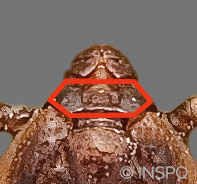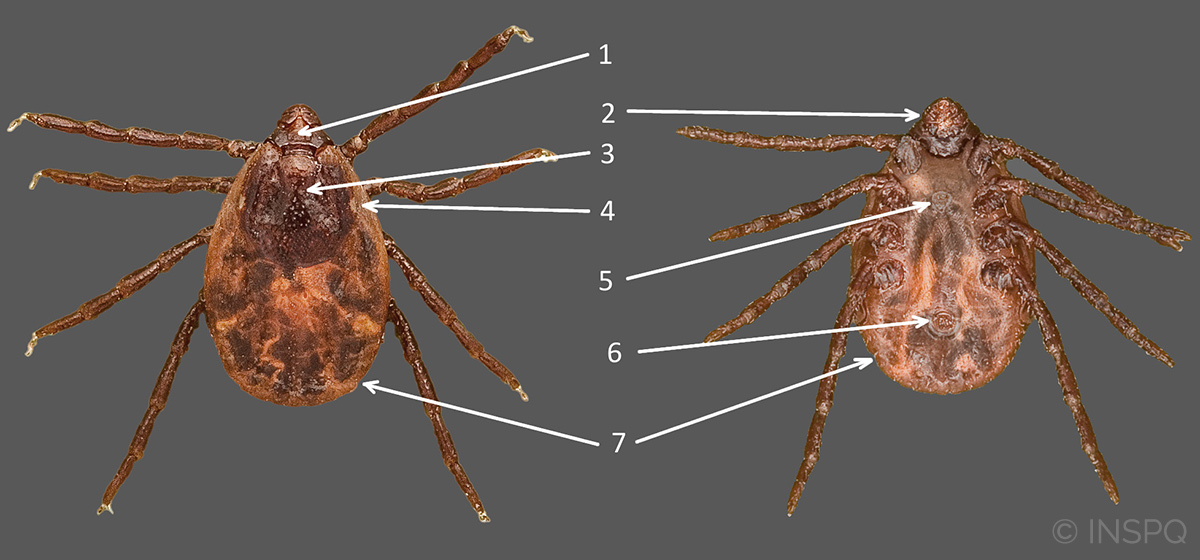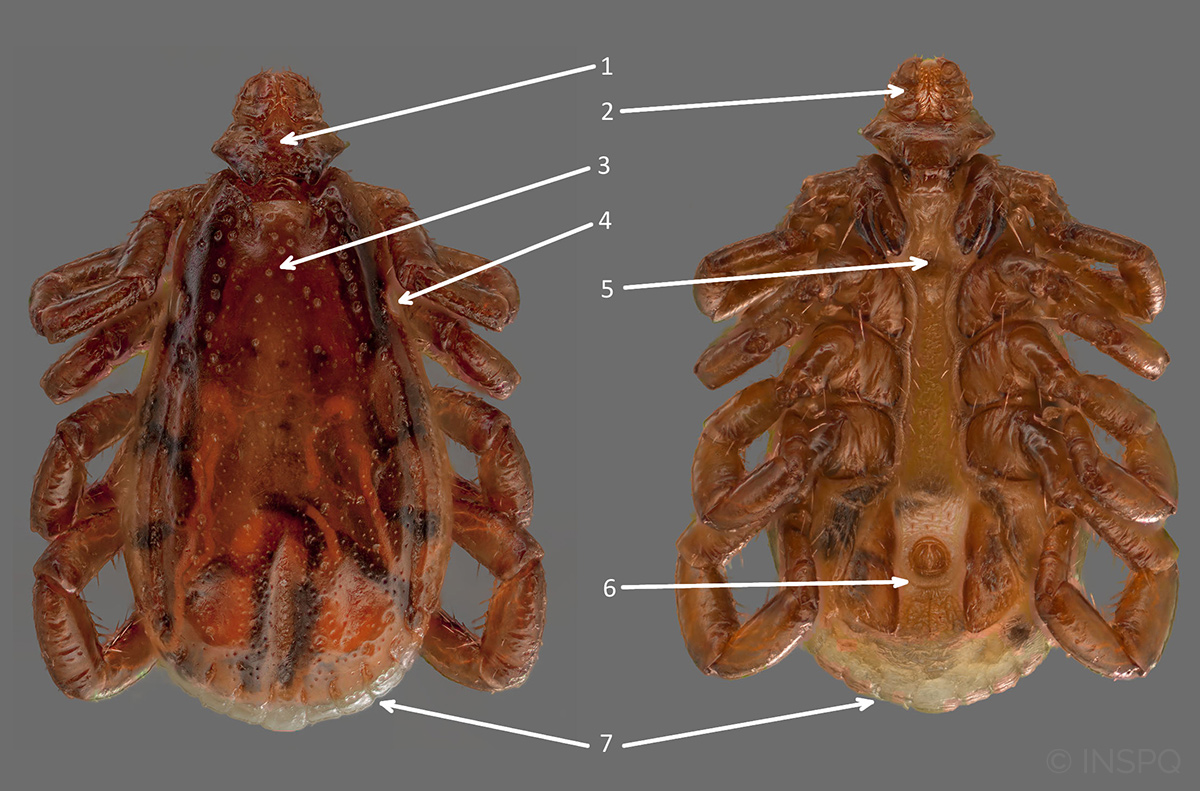Rhipicephalus sanguineus, or kennel tick or brown dog tick
Clinical considerations
The Rhipicephalus sanguineus tick can transmit the bacterium Rickettsia rickettsii, the agent responsible for Rocky Mountain spotted fever. The incidence of Rocky Mountain spotted fever is low throughout Canada and no cases have been reported so far in Québec. The risk of acquiring Rocky Mountain spotted fever in Québec is therefore low.
Geographical distribution
This tick species has a worldwide distribution. It is known to parasitize dogs in particular, so the presence of dogs in a given environment increases the risk of contact with this tick species.
Morphological characteristics
Rhipicephalus sanguineus in the female stage
Dorsal surface and ventral surface of the Rhipicephalus sanguineus tick in the female stage.
 Head
Head
1 - Basis capituli hexagonal (see photo opposite)
2 - Short palps (the length of the palps is similar to that of the basis capituli)
Abdomen
3 - Partial shield, inornate
4 - Presence of eyes
5 - The female stage differs from the nymph stage by the presence of a genital pore
6 - Anal groove below the anus
7 - Presence of festoons (band of grooves and ridges on posterior margin of abdomen)
Rhipicephalus sanguineus in the male stage
Dorsal surface and ventral surface of the Rhipicephalus sanguineus tick in the male stage.
Head
1 - Basis capituli hexagonal
2 - Short palps (the length of the palps is similar to that of the basis capiti)
Abdomen
3 - Partial shield, inornate
4 - Presence of eyes
5 - Presence of genital pore
6 - Anal groove below the anus
7 - Presence of festoons (band of grooves and ridges on posterior margin of abdomen)



